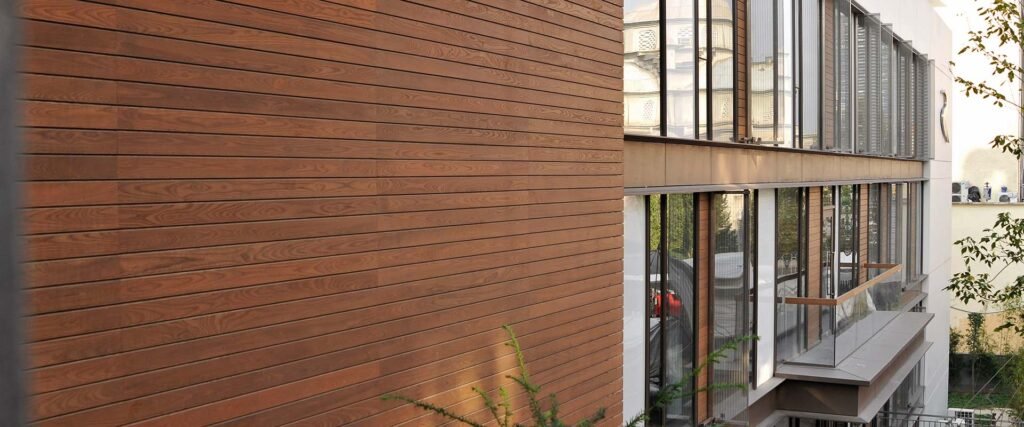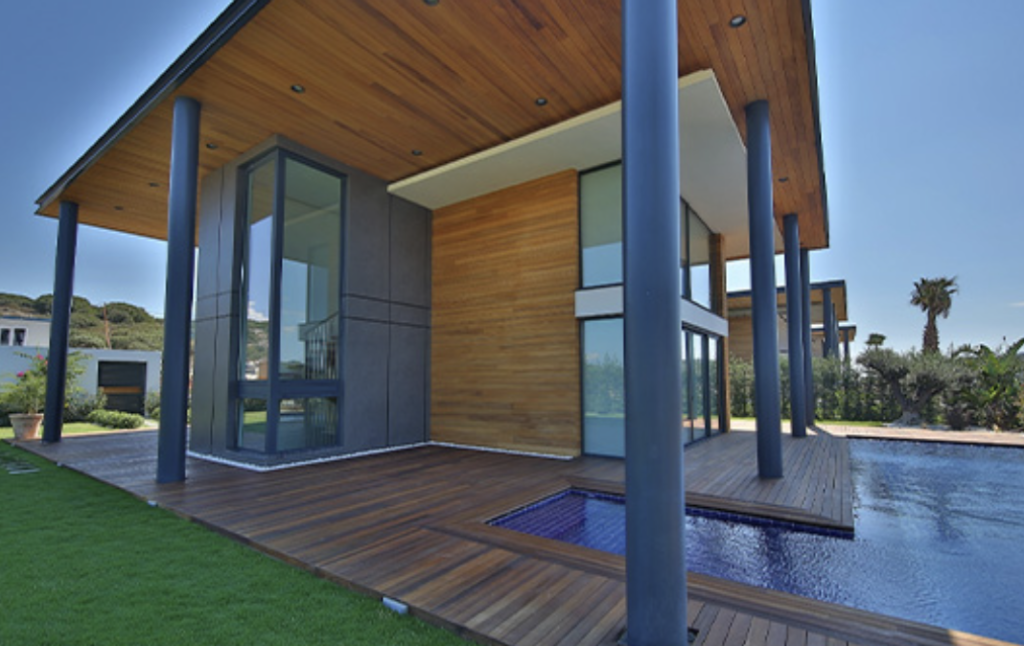In a home, wood siding serves a few significant purposes. First and foremost, it protects the home and its inhabitants from the natural elements. Wood house siding also functions as a layer of insulation, helping to keep temperatures comfortable all year round. A third function that should not be overlooked is that wood siding also enhances the appearance of a house. High-quality wood can look great on the side of any building, especially when it is properly maintained.
While wood siding in general is very popular, not all wood products are the same. Some types of wood are better suited for house siding than others. Among the best, and newest, types of wood for home siding is thermally modified wood.
Here is everything you should know about wood siding, and why thermally modified wood is a great siding option.
Why is Wood the Best Material for House Siding?
House siding can be made from a few different materials. In addition to wood, some homes use vinyl, metal, fiber cement, or brick siding. However, wood is the preferred option for home siding for a couple of reasons.
First, it is the best natural insulator of all the most common siding materials. While house siding is not the primary source of insulation in homes, it can make a measurable difference over the course of the year.
Second, wood siding has a longer lifespan than other siding materials. The exact lifespan of wood siding depends on the type of wood being used. However, most wood siding is expected to last at least 20 years.
Third, many homeowners who choose wood siding do so because of its appearance. Wood siding gives a much more natural look to the house, which many people prefer.
What Makes Thermally Modified Wood Good for Siding and Cladding?
Wood, in general, is the preferred siding material for many homeowners. But thermally modified wood siding is particularly effective for a number of reasons. To understand why, it’s important to learn how thermally modified wood is made.
As the name implies, thermally modified wood is lumber that has been modified by extreme temperatures. But the thermal modification process is not as simple as heating up a piece of lumber. Rather, thermally modified wood is made using a special oxygen-deficient kiln. The wood is placed in this unique kiln with reduced oxygen to prevent combustion at high temperatures. The temperature is then raised to around 200 degrees Celsius.
This process reduces the moisture content of the wood, and also removes a compound known as hemicellulose. Hemicellulose is a common food source for many types of fungi and insects, including termites. By using high temperatures to remove hemicellulose, the lumber is less likely to be damaged by insects, mold, or fungal infection. The reduced moisture content also enhances the wood’s durability by making it less absorbent. This means that thermally modified wood has a decreased chance of warping due to water damage over time.
Benefits of Thermally Modified Wood Siding
The primary reason why thermally modified wood is such a good option for house siding is that it is naturally resistant to outdoor elements. Water, mold, and insect infestation are some of the most common causes of damage to house siding. But thermally modified wood siding is uniquely treated to withstand all of these conditions.
As a result, thermally modified wood is an extremely cost-effective siding material. Because it is so durable and dimensionally stable, homeowners can go 25 or more years without needing to replace their siding. Thermally modified wood may have a higher upfront cost, but homeowners can still save money in the long run.
Thermally modified wood is also preferred over other forms of treated wood because it is more environmentally friendly. Other forms of wood treatment can achieve similar effects to thermally modified wood. However, these treatment methods often rely on chemical modifications that can potentially harm the environment. Thermal modification uses no chemicals at all to treat the wood.
One last feature to note about thermally modified wood siding is its appearance. In addition to altering its stability, thermal modification also changes the appearance of wood. The extreme heat exposure of the thermal modification process creates a darker hue on natural wood products. This can result in a unique and natural appearance that many homeowners appreciate for their home siding.
What Types of Wood Use Thermal Modification?
Thermally modified wood is not reserved for a few select species. The process of making thermally modified wood is relatively new, and it does vary for different types of wood. As a result, some wood types are used more heavily to make thermally modified wood. However, the most common types of wood used are not the only ones that can be thermally modified.
Both hardwoods and softwoods can be thermally modified. Some of the most common species used include oak, ash, cedar, and western hemlock.
Is Thermally Modified Wood Siding Right For Your Home?
There are several strong arguments to be made in favor of thermally modified wood siding. But, how can you decide if it’s the right choice for you and your home?
There are very few inherent drawbacks to using thermally modified wood for siding or wall slats. It is a chemical-free and more durable version of untreated wood products. If you prefer the “natural” aesthetic of wood siding and walls, then thermally modified wood is worth considering.
Ultimately, your decision comes down to matters of budget, preference, and availability. Because of the unique properties of thermally modified wood, it is a viable option for home siding in any climate or environment. However, it may be more difficult to find thermally modified wood siding than other types of wood products.
If you are searching for top-quality, durable wood siding of any variety, Lumber Plus may have what you’re looking for. Lumber Plus sells only carefully selected, responsibly sourced hardwood and composite wood materials for all types of wood projects. Contact Lumber Plus for questions about lumber and wood options.


